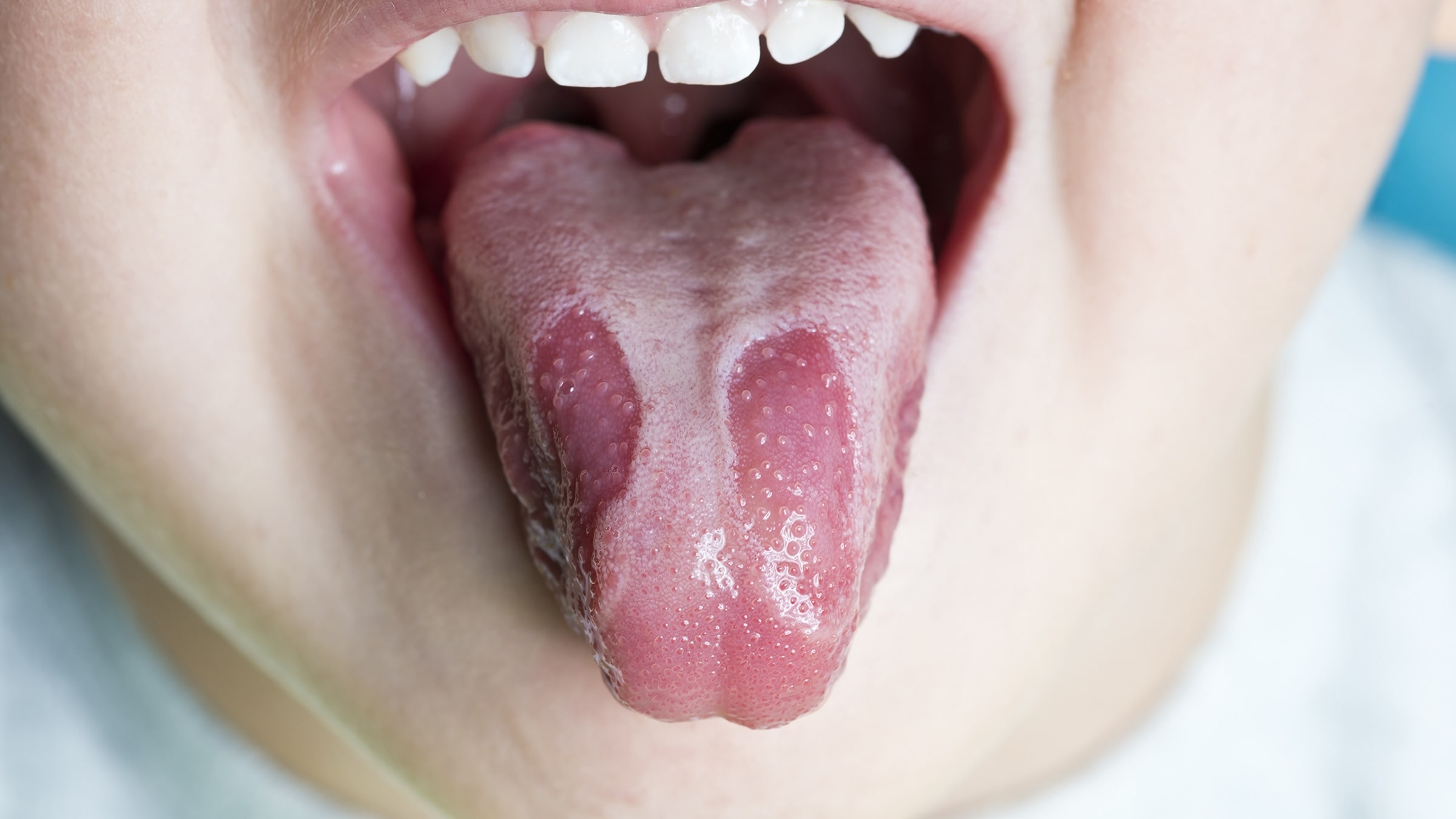
Geographic tongue might sound like a map-related term, but it’s actually a harmless yet curious condition affecting the tongue’s surface. Ever noticed red patches with white borders on someone’s tongue? That’s geographic tongue. These patches can change location, size, and shape, making the tongue look like a shifting landscape. While it might look alarming, it’s usually painless and doesn’t lead to serious health issues. Some people might experience mild discomfort or sensitivity to certain foods. The exact cause remains unknown, but factors like genetics, stress, and certain foods might play a role. Ready to learn more? Here are 50 intriguing facts about geographic tongue!
Key Takeaways:
- Geographic tongue is a non-contagious condition that causes red patches on the tongue. It's often painless but can be sensitive to certain foods. Stress and hormonal changes may influence its occurrence.
- Living with geographic tongue involves managing symptoms by avoiding trigger foods, staying hydrated, and maintaining good oral hygiene. It's important to educate others about the condition and remember that it's benign.
What is Geographic Tongue?
Geographic tongue, also known as benign migratory glossitis, is a condition that affects the surface of the tongue. It gets its name from the map-like appearance of red patches with white borders that can change location over time.
- Geographic tongue is not contagious.
- The exact cause remains unknown.
- It affects about 1-3% of the population.
- Women are more likely to have it than men.
- It can appear at any age but is more common in adults.
- The condition is often painless.
- Some people may experience a burning sensation.
- Stress can exacerbate symptoms.
- Hormonal changes might influence its occurrence.
- It is not related to cancer.
Symptoms and Appearance
Understanding the symptoms and appearance of geographic tongue can help in identifying the condition. The tongue's surface changes can be quite distinctive.
- Red, smooth patches appear on the tongue.
- These patches are often surrounded by white or light-colored borders.
- The patches can change shape and location.
- The condition can come and go.
- Some people may notice fissures or cracks on the tongue.
- The patches can make the tongue sensitive to certain foods.
- Spicy foods may cause discomfort.
- Acidic foods can also trigger symptoms.
- Alcohol might worsen the burning sensation.
- The patches do not bleed.
Causes and Risk Factors
While the exact cause of geographic tongue is still a mystery, several factors may contribute to its development. Knowing these can help manage the condition better.
- Genetic factors may play a role.
- Family history can increase the risk.
- Psoriasis is sometimes linked to geographic tongue.
- Vitamin deficiencies might contribute.
- Zinc deficiency has been noted in some cases.
- Allergies could be a trigger.
- Hormonal changes during pregnancy can cause flare-ups.
- Oral contraceptives might influence symptoms.
- Diabetes has been associated with the condition.
- Smoking does not seem to increase the risk.
Diagnosis and Treatment
Diagnosing geographic tongue is usually straightforward, and treatment focuses on managing symptoms. Here’s what you need to know about diagnosis and treatment options.
- A dentist or doctor can diagnose it by examining the tongue.
- No special tests are usually needed.
- Biopsy is rarely required.
- Treatment is often unnecessary.
- Over-the-counter pain relievers can help with discomfort.
- Topical corticosteroids may be prescribed for severe cases.
- Antihistamines can reduce inflammation.
- Avoiding trigger foods can minimize symptoms.
- Maintaining good oral hygiene is important.
- Regular dental check-ups can help monitor the condition.
Living with Geographic Tongue
Living with geographic tongue involves managing symptoms and making lifestyle adjustments. Here are some tips for coping with the condition.
- Keep a food diary to identify triggers.
- Stay hydrated to keep the mouth moist.
- Use a soft-bristled toothbrush to avoid irritation.
- Avoid mouthwashes with alcohol.
- Opt for a balanced diet rich in vitamins and minerals.
- Stress management techniques can be beneficial.
- Inform your dentist about the condition.
- Join support groups for shared experiences.
- Educate family and friends about the condition.
- Remember that it is a benign condition and does not lead to serious health issues.
The Final Word on Geographic Tongue
Geographic tongue, though it looks alarming, is usually harmless. It affects the tongue's appearance, causing red patches with white borders. These patches can change location, size, and shape over time. While the exact cause remains unknown, factors like genetics, stress, and certain foods might trigger it. Most people don't need treatment, but if discomfort occurs, over-the-counter pain relievers or mouth rinses can help.
Remember, geographic tongue doesn't increase the risk of other health problems. If you notice unusual changes or persistent discomfort, consult a healthcare professional. Staying informed about this condition can ease worries and help manage symptoms effectively. So, next time you spot those curious patterns on your tongue, you'll know it's just a quirky, harmless condition.
Frequently Asked Questions
Was this page helpful?
Our commitment to delivering trustworthy and engaging content is at the heart of what we do. Each fact on our site is contributed by real users like you, bringing a wealth of diverse insights and information. To ensure the highest standards of accuracy and reliability, our dedicated editors meticulously review each submission. This process guarantees that the facts we share are not only fascinating but also credible. Trust in our commitment to quality and authenticity as you explore and learn with us.
